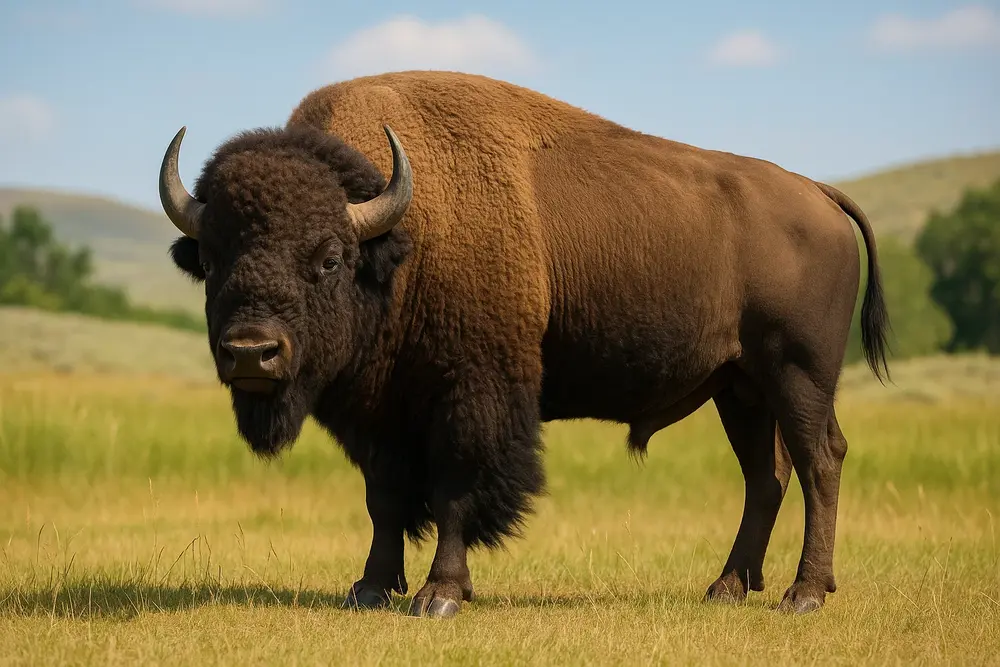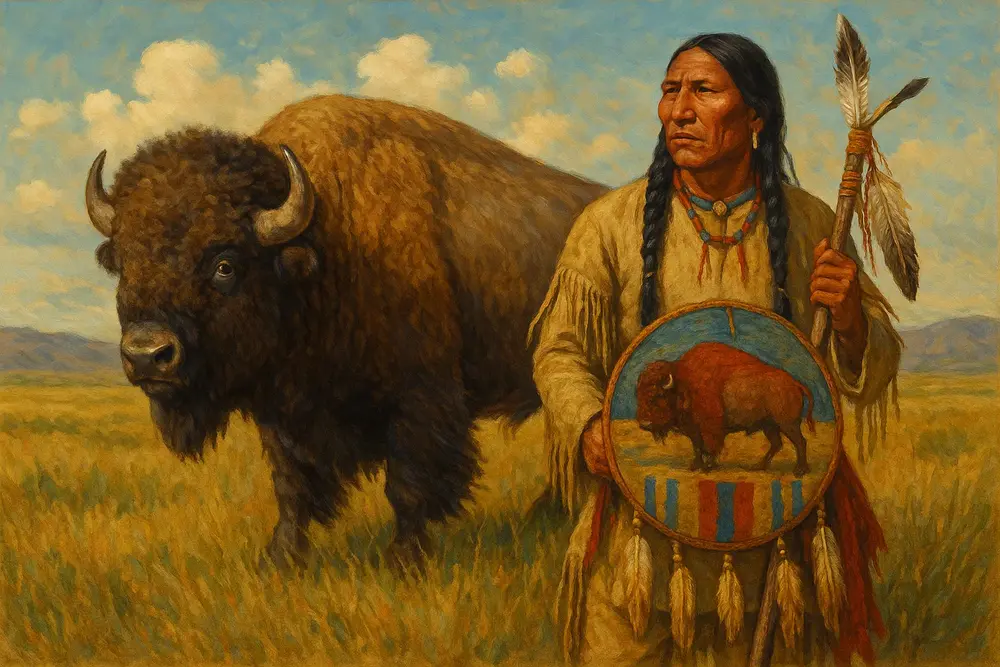When users search for "state animal bison," they are often seeking more than just basic identification. They want to know: Why is the bison a state animal? What does it symbolize? What’s its historical and cultural importance? This in-depth exploration covers everything from biology to state symbolism, conservation efforts, and the bison’s enduring legacy in the American narrative.

The American bison (Bison bison), sometimes mistakenly called a buffalo, is the largest land mammal in North America. It belongs to the Bovidae family and is native to the grasslands, forests, and plains of North America.
Weight: Up to 2,000 pounds (900 kg) for males
Height: Around 6 feet (1.8 meters) at the hump
Lifespan: 15–20 years in the wild
Speed: Can run up to 35 mph (56 km/h)
Coat: Thick, shaggy fur, especially prominent around the head and shoulders
In 2016, the American bison was officially declared the National Mammal of the United States through the National Bison Legacy Act, solidifying its status as a symbol of America’s frontier heritage and strength.

The bison is the state mammal or official animal of several U.S. states:
Kansas: State animal since 1955
Wyoming: State mammal
Oklahoma: State animal and featured on the state flag
North Dakota: Official state mammal
The bison was—and still is—central to the cultural, spiritual, and economic lives of many Native American tribes, particularly Plains nations such as the Lakota, Cheyenne, and Blackfeet.
Bison were used for:
Food (meat and organs)
Clothing (hides)
Shelter (tipis made from hides)
Tools (bones and horns)
Ceremonies and spiritual symbolism
The bison is a frequent figure in American art, coinage, and branding:
U.S. nickel (Buffalo nickel, 1913–1938)
Logos for institutions like the Department of the Interior and National Park Service
State seals, flags, and sports mascots

Historically, tens of millions of bison roamed the Great Plains, from Mexico to Canada. Today, wild herds are found mainly in national parks and protected areas like:
Yellowstone National Park (the only place bison have lived continuously since prehistoric times)
Wind Cave National Park
Tallgrass Prairie Preserve
Bison help maintain healthy prairie ecosystems by:
Grazing and shaping plant communities
Dispersing seeds
Creating wallows that collect rainwater, benefiting other species
Between 1800 and 1880, the bison population plummeted from 30–60 million to fewer than 1,000 due to:
Overhunting by settlers
Railroad expansion
Government efforts to undermine Native populations
Thanks to early conservationists, including President Theodore Roosevelt and the American Bison Society, small herds were preserved and bred back into protected areas.
Today, around 500,000 bison live in North America, though only about 30,000 are wild and free-ranging. Most are in private herds, which are often managed for meat production.
While commonly called buffalo, the American bison is not the same as the African Cape buffalo or the Asian water buffalo. Key differences include:
Hump: Present in bison, absent in true buffalo
Horn Shape: Short and curved in bison; long and crescent-shaped in buffalo
Location: Bison are native to North America
Programs across the U.S. and Canada are working to restore bison to tribal lands and nature preserves, including:
InterTribal Buffalo Council initiatives
American Prairie Reserve in Montana
Bison are a major draw for wildlife tourism, especially in Yellowstone. Their presence contributes to local economies and public education about native species.
Many U.S. state education programs include lessons on the bison’s role in frontier history, ecology, and Indigenous culture.
Numerous schools and universities use the bison as a mascot, including:
University of Colorado Boulder (Ralphie the Buffalo)
North Dakota State University (Bison)
Bison calves are called “red dogs” due to their orangey coat at birth.
Despite their bulk, bison are agile swimmers.
Males grunt and snort during the rutting (mating) season to compete for mates.
Featured in movies like Dances with Wolves and nature documentaries
Appears in the National Zoo and wildlife parks globally
Support organizations like:
National Bison Association
Wildlife Conservation Society
World Wildlife Fund (WWF)
Buy sustainably sourced bison meat and support Native-led bison initiatives.
Spread awareness about the bison’s role in American heritage and ongoing conservation challenges.
The bison is more than a symbol—it is a living testament to resilience, cultural identity, ecological balance, and historical redemption. As a national and state animal, it reminds us of where we’ve been, what we almost lost, and the responsibility we share in protecting the creatures that shaped our continent.
animal tags: State Animal Bison
We created this article in conjunction with AI technology, then made sure it was fact-checked and edited by a Animals Top editor.